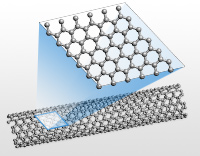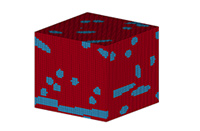Release Information
J-OCTA 3.1
The Latest version of J-OCTA v3.1 has been released.
JSOL Corporation has released the latest version of J-OCTA, v3.1, in July 2017.
In v3.1, various new features and enhancements, such as new force field definitions and a force field optimizing functionality, have been added. The usability of the interface has been remarkably improved, an interface access to the job management system has been added, and the platform has been enhanced. Now users can confirm the job execution status and the job queue from J-OCTA.
Please try and explore the powerful and user-friendly J-OCTA v3.1 which includes further enhancement on its modeling feature.
What's new on J-OCTA v3.1
Added new force field - OPLS-AA and L-OPLS
The latest, 2016 version, parameter for OPLS-AA force field is now available on the J-OCTA v3.1. OPLS-AA is based on AMBER force field, with modifications, primarily on the dihedral and the unbound potential. The molecular type determines the atomic species, resulting in defining numerous atomic species. L-OPLS force field tuned to support the macromolecule is also available. OPLS : Optimized Potentials for Liquid Simulations. AA = All Atom.
Added the force field parameter optimization
The force field parameter (bond, angle, torsion) adjustment functionality has been enhanced. A force parameter optimization functionality referring to the quantum chemical calculation to quickly obtain the optimized parameter has been added.
For details of this new functionality, see [Notable Function].
Added carbon nanotube support (modeling functionality, for MD calculation)
The support for generating carbon nanotube structures by defining chiral exponent has been added. The support for a crystal model built by defining the crystal face has also been added. The functionality to easily build graphene sheet models, containing connections and filler models, was enhanced.

Added Concentration distribution support(for MD and SCF calculations)
User-defined concentration distribution contour supports the combination of multiple geometries (cuboid, sphere, cylinder). It can be used for molecular dynamics (MD) and Self Consistent Field (SCF) calculations as an input.

Enhanced FEM co-operating function
The concentration distribution obtained from MD or SCF can be exported as voxel meshes for FEM co-operation (LS-DYNA). The export function also supports STL format (surface mesh) and NASTRAN bulk format (tetra mesh).
Added interface to access job management system
Users can input jobs in the job management system (PBS Pro, Torque ...) from J-OCTA. A list of the jobs input via J-OCTA, along with their execution status and result, will be available on the interface.
